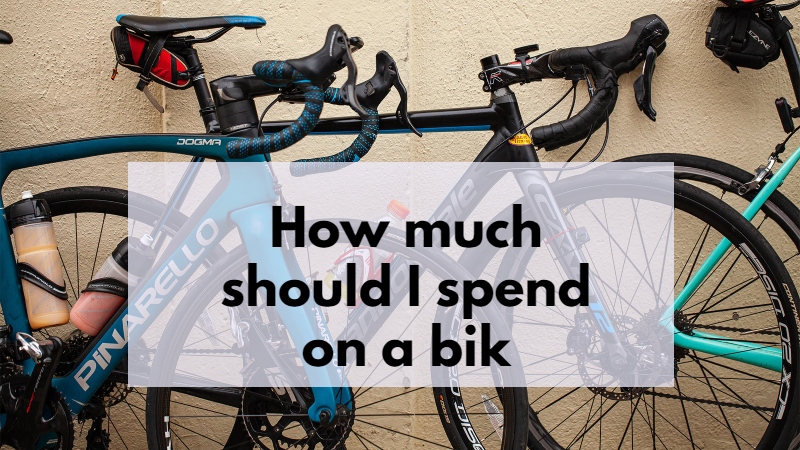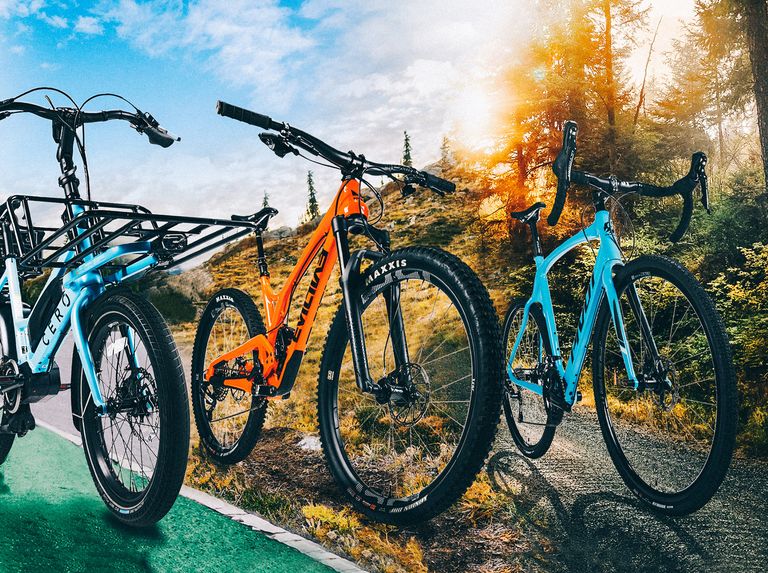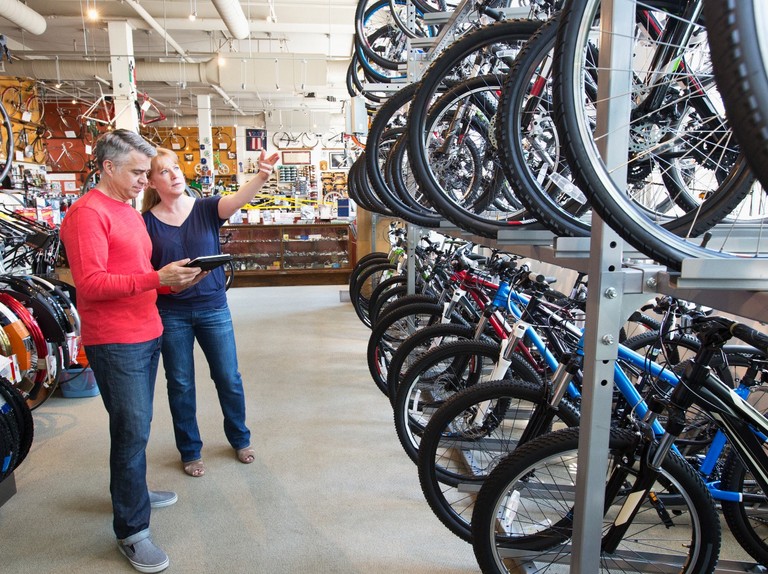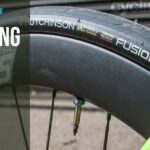Buying a new bike can be an exhilarating and enriching experience. Whether you’re a first-time buyer or looking to upgrade, the question, “How much should I spend on a bike?” is super important. With the myriad of options in 2023, ranging from road bikes to e-bikes, understanding what you’re paying for becomes super important. This comprehensive guide will walk you through the different types of bikes, their features, and how to determine the right amount to spend on your new ride.
Understanding the types of bikes available is the first step in determining how much to spend. Each type caters to different riding styles and needs:
- Road Bikes: Known for their speed and efficiency, road bikes are ideal for those looking for a lightweight, agile option for commuting, fitness riding, and racing. With their narrow tires and aerodynamic design, they promise a smooth ride on paved surfaces.
- Mountain Bikes: If off-road adventures are your calling, mountain bikes are your best bet. Equipped with wide tires and robust suspension systems, they’re built to handle rough terrains, making them perfect for trail riding, downhill challenges, and bikepacking escapades.
- Hybrid Bikes: As the name suggests, hybrid bikes blend the qualities of road and mountain bikes. They strike a balance between speed and comfort, making them suitable for everyday commuting, recreational rides, and moderate off-road trails.
- City Bikes: For the urban rider, city bikes offer comfort and practicality. Designed for easy navigation through city streets, they typically feature an upright riding position, wide tires, and accessories like fenders for practicality in urban environments.
- E-bikes: E-bikes bring an extra boost with their battery-powered assistance. They are an excellent choice for those seeking a less strenuous ride, especially over long distances or hilly terrains.
Features to Consider
After choosing your bike type, consider these super important features to ensure you make a wise investment:
- Frame Material: The bike’s frame is its backbone. Aluminum frames are popular for their lightweight and durability, while steel frames offer affordability and resilience. Carbon fiber frames, though the most expensive, are the lightest and offer superior ride quality.
- Components: The quality of shifters, derailleurs, brakes, and drivetrain greatly impacts performance and longevity. Higher-end components might be pricier, but they ensure smoother operation and are often more durable.
- Wheels: Wheel size and material affect your bike’s performance. Larger wheels offer more speed, whereas smaller ones provide better maneuverability. Aluminum wheels strike a balance between cost and performance, while carbon fiber wheels are lighter but pricier.
- Tires: The width and tread of your tires should match your riding terrain. Wider tires offer more comfort and grip on uneven surfaces, while narrower tires are designed for speed and efficiency on smooth roads.
Price Ranges
Bike prices vary widely, influenced by type, features, and brand. Here’s a general price guide for 2023:
- Road Bikes: $200-$5,000+. The price escalates with advanced materials like carbon fiber and high-end components.
- Mountain Bikes: $200-$10,000+. Higher-priced models offer advanced suspension systems and rugged build for extreme terrains.
- Hybrid Bikes: $200-$1,500+. These bikes offer a balance of quality and affordability, suitable for various everyday uses.
- City Bikes: $200-$1,000+. These bikes prioritize comfort and practicality, with prices varying based on added features like gear systems and built-in lights.
- E-bikes: $500-$5,000+. The cost largely depends on the battery technology and motor efficiency, with higher-end models offering longer range and more power.
Understanding these price ranges is vital in setting a realistic budget for your bike purchase. It’s super important to consider not only the initial cost but also the long-term value, especially if you plan to use your bike frequently or for specific activities like racing or long-distance touring.
How Much to Spend on a Bike
Determining how much to invest in a bike is a personal decision, influenced by your cycling needs, frequency of use, and budget. For beginners or occasional riders, a decent quality bike can be purchased for $200-$500. However, if you’re more enthusiastic or require specific performance features, a budget of $500-$1,000 or higher is advisable for a high-performance bike.
Consider these factors when deciding your budget:
- Riding Frequency: If your bike use is sporadic, a less expensive model may suffice. However, regular riders should consider investing in a higher-quality bike for durability and a better riding experience.
- Riding Terrain: Your terrain dictates the type of bike you need. Smooth, paved roads might only require a basic road or city bike, while rugged or off-road trails necessitate a more robust mountain bike.
- Desired Features: Evaluate what’s important to you. Do you prioritize a lightweight frame for speed, top-notch components for smooth operation, or a comfortable ride for long distances? These preferences will influence the cost.
Remember, a higher price doesn’t always guarantee a better bike. It’s about finding the right balance between quality, performance, and cost.
Tips for Buying a Bike on a Budget
If you’re working with a limited budget, there are strategies to find a great bike without breaking the bank:
- Buy Used: Second-hand bikes can offer excellent value. Look for gently used bikes in good condition, as they often come at a fraction of the cost of new models.
- Discount Retailers: Some retailers offer bikes at significantly lower prices than traditional bike shops. These may be previous year models or less popular brands but can be great options for budget-conscious buyers.
- Direct-to-Consumer Brands: These companies sell bikes directly to customers, cutting out the middleman. This business model can result in lower prices for comparable quality.
- Seasonal Sales and Promotions: Keep an eye out for sales during off-peak seasons or holiday promotions, as retailers often offer substantial discounts.
- Prioritize Essential Features: Focus on what you truly need. A more affordable bike with fewer but super important features can be a better investment than a pricier model with extras you may never use.
Conclusion
In 2023, buying a new bike offers a fantastic way to stay active, explore the outdoors, and even serve as an eco-friendly mode of transportation. Understanding how much to spend on a bike depends on various factors, including the type of bike, desired features, and your personal needs and budget. Whether you’re an avid cyclist or a casual rider, there’s a bike out there that’s perfect for you.
For an extensive range of bikes that cater to different budgets and riding styles, visit Refried Cycles. Explore our collection and find your ideal match for a joyful and efficient biking experience.









